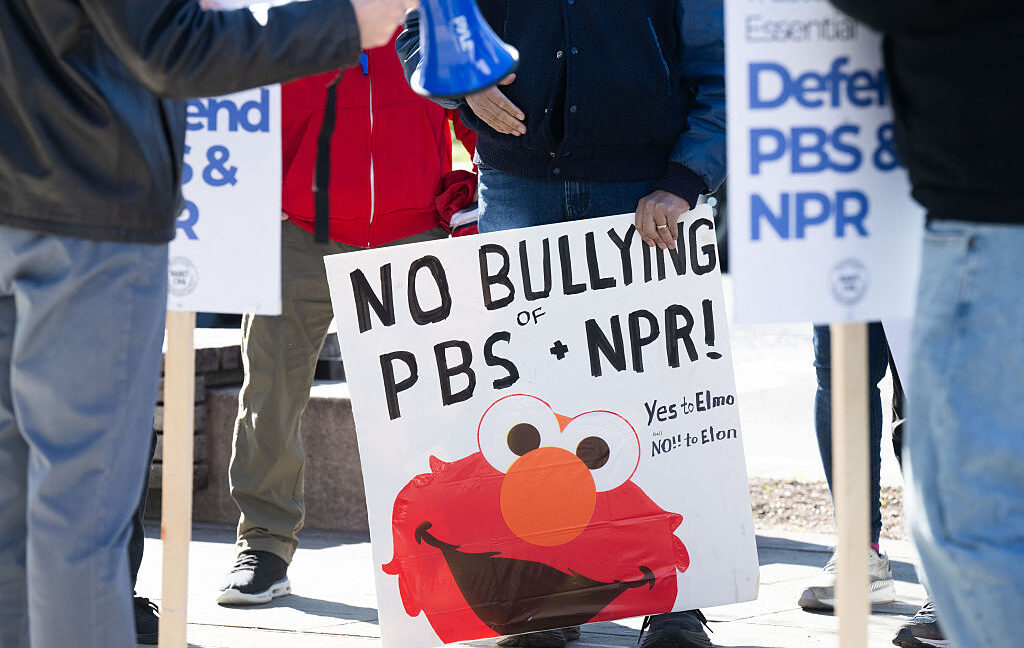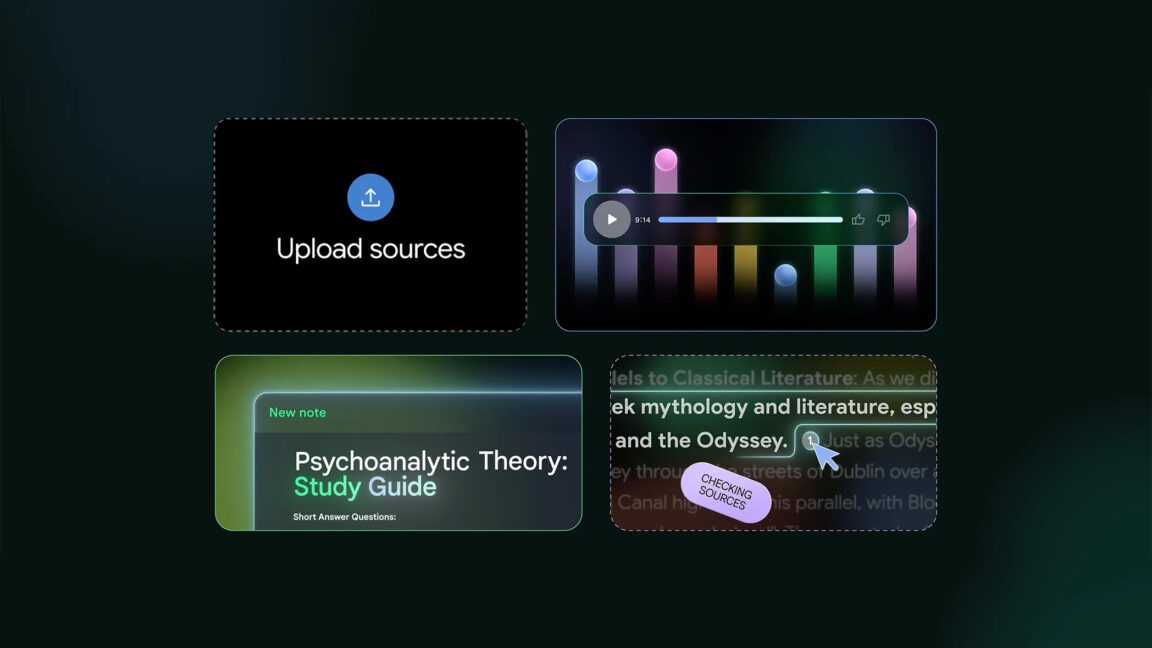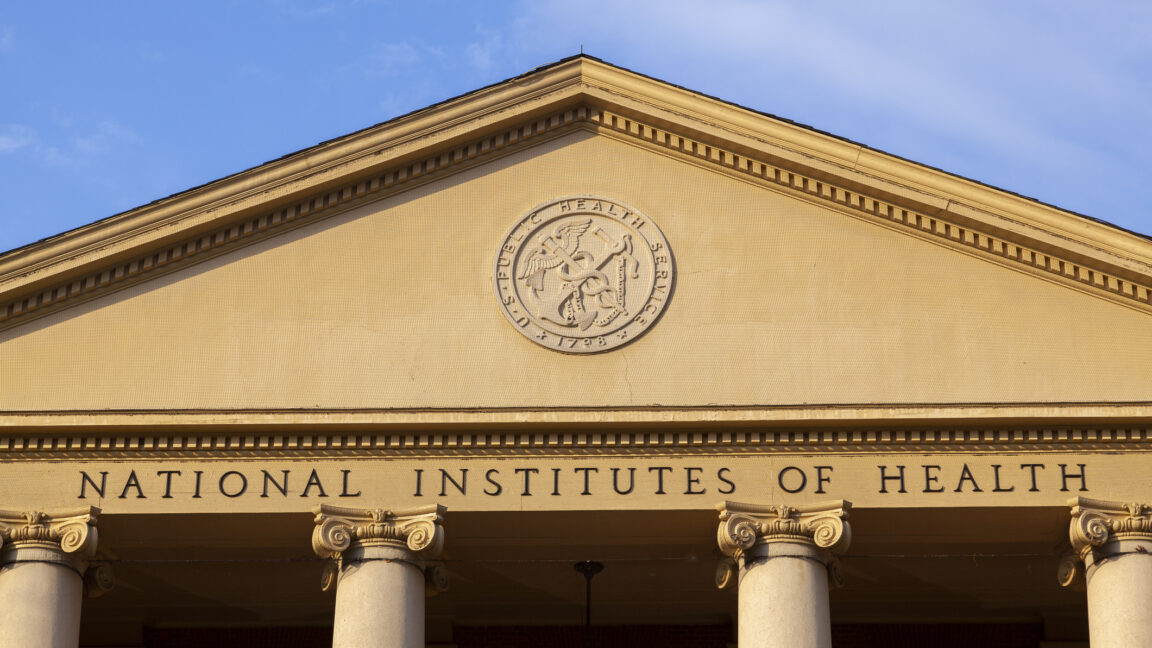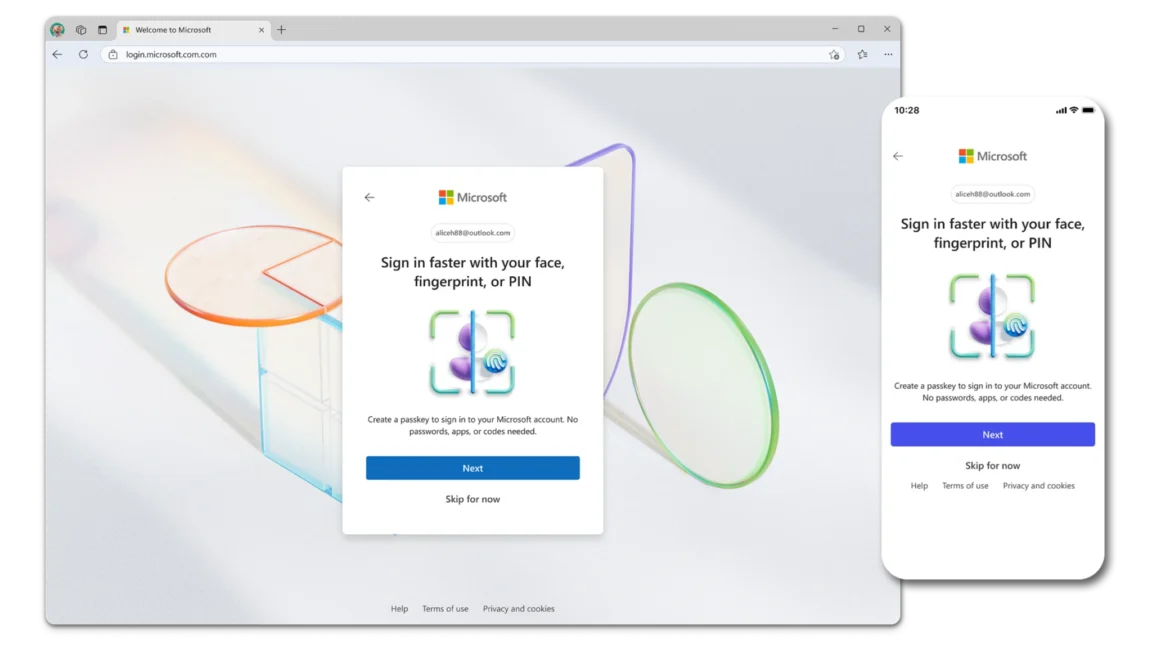Our picks
90001 Edit ZIP code Why we chose these providers
Sort by
Combined coverage areas make high availability 10 - 5,000 Mbps $55 - $190 per month
Check with Earthlink Internet
Provider not available in
90001
Edit ZIP code
...
Or call to learn more:
(855) 224-3025
Best 5G home internet coverage 72 - 245 Mbps $60 per month
Check with T-Mobile
Provider not available in
90001
Edit ZIP code
...
Or call to learn more:
(866) 953-6099
Best fiber coverage in the South, Midwest and CA 300 - 5,000 Mbps $55 - $250 per month
Check with AT&T Fiber
Provider not available in
90001
Edit ZIP code
...
Or call to learn more:
(844) 471-4975
Best cable internet availability 150 - 2,000 Mbps $19 - $95 per month
Check with Xfinity Internet
Provider not available in
90001
Edit ZIP code
...
Or call to learn more:
(877) 533-4521
Big cable ISP with high availability in the East 500 - 1,000 Mbps $50 - $80 per month
Check with Spectrum Internet
Provider not available in
90001
Edit ZIP code
...
Or call to learn more:
(844) 308-8919
Second broadest 5G coverage nationwide 85 - 1,000 Mbps $50 - $70 per month
Check with Verizon 5G
Provider not available in
90001
Edit ZIP code
...
Or call to learn more:
() -
Decent coverage in Florida and west of the Mississippi 10 - 140 Mbps $55 per month
Check with CenturyLink
Provider not available in
90001
Edit ZIP code
...
Or call to learn more:
(877) 641-4645
Great coverage in the Northeast and mid-Atlantic 300 - 2,000 Mbps $50 - $120 per month
Check with Verizon Fios
Provider not available in
90001
Edit ZIP code
...
Or call to learn more:
(877) 665-6130
Cable internet coverage for major metro areas 100 - 2,000 Mbps $50 - $110 per month
Check with Cox Communications
Provider not available in
90001
Edit ZIP code
...
Or call to learn more:
(844) 676-2654
In 25 states, with fiber coverage to 15 of them 500 - 5,000 Mbps $50 - $155 per month
Check with Frontier Fiber
Provider not available in
90001
Edit ZIP code
...
Or call to learn more:
(877) 308-8380
Cable and fiber internet in NYC and parts of the South 300 - 8,000 Mbps $40 - $280 per month
Check with Optimum Internet
Provider not available in
90001
Edit ZIP code
...
Or call to learn more:
(877) 819-5797
Largest fixed wireless provider with rural internet in 16 states 25 - 50 Mbps $45 - $65 per month
Check with Rise Broadband
Provider not available in
90001
Edit ZIP code
...
Or call to learn more:
(844) 283-9288
Rural and suburban coverage in the Midwest, South and Southwest 100 - 1,000 Mbps $40 - $70 per month
Check with Kinetic Internet
Provider not available in
90001
Edit ZIP code
...
Or call to learn more:
(855) 387-1056
Cable internet coverage in select major markets 100 - 1,500 Mbps $20 - $80 per month
Check with Astound Broadband
Provider not available in
90001
Edit ZIP code
...
Or call to learn more:
(877) 308-2484
Coverage spans throughout the Midwest and South 100 - 1,000 Mbps $25 - $80 per month
Check with Mediacom Communications
Provider not available in
90001
Edit ZIP code
...
Or call to learn more:
(866) 225-4105
Show 10 more
Table of Contents
Best Internet Providers in Your Area
What's the best internet provider in your area?
Top ISPs available in the country
Top internet providers compared
What internet providers are in your city?
Internet availability by technology
How to choose the best internet in your area
How we selected the top ISPs in your area
Internet in my area FAQs
What's the best internet provider in your area?Despite there being 99.88% broadband availability nationwide, you may not have more than one or two good options when it comes to picking an internet provider. In fact, more than a third of Americans have access to only one have no access to an internet provider. Unfortunately, we're limited by what internet providers serve our address. Where you live determines which providers you can get, the technologies they use and the speeds they offer. You may have access to one or two internet connection types, like fiber or cable. Many areas have at least one cable internet provider plus a DSL or fiber-optic ISP, while others may have 5G home internet options from Verizon and T-Mobile's widespread coverage. There's a good chance you'll be eligible for service from the country's biggest ISPs. The largest cable internet companies in the country are Xfinity and Spectrum, while AT&T Fiber, Frontier Fiber and Verizon Fios make up the majority of fiber-optic availability. Aside from the large national providers, there are hundreds of local cable, fiber and wireless providers across the US.Top ISPs available in the countryISP availability is always changing, which is why the FCC updates provider data twice a year (see CNET's breakdown of the FCC data). It's this data that we use to determine available internet providers in your area and the technologies they use.In general, large cities like Seattle or Chicago are where you’ll find the greatest fiber availability and fastest speeds, although cable internet can deliver gig download speeds and is available to roughly 21% of households. Rural areas are often limited to slower options like DSL or satellite, but 5G home internet -- particularly from T-Mobile -- or local fixed wireless internet providers are a growing alternative to broadband service in rural areas. Take our quiz
Get Started
Progress
Step 1 of 4
How many members of your household use the internet? 1-2 people 3-5 people 6-9 people 10+ people
Next
Internet providers by availability EarthLink: Available in 48 states, with 75% nationwide coverage.T-Mobile Home Internet: Available in 49 states, with 60% nationwide coverage.AT&T: Available in 21 states, with 49% nationwide coverage.Xfinity: Available in 39 states, with 34% nationwide coverage.Spectrum: Available in 41 states, with 29% nationwide coverage.Verizon 5G Home Internet: Available in 50 states, with 22% nationwide coverage.CenturyLink and Quantum Fiber: Available in 16 states, with 11% nationwide coverage.Verizon Fios: Available in nine states, with 9% nationwide coverage.Cox: Available in 18 states, with 5% nationwide coverage.Frontier: Available in 29 states, with 5% nationwide coverage.Optimum: Available in 21 states, with 7% nationwide coverage.Rise Broadband: Available in 16 states, with less than 1% nationwide coverage.Windstream: Available in 18 states, with 2% nationwide coverage.Astound: Available in 12 states, with 2% nationwide coverage.Mediacom: Available in 22 states, with 2% nationwide coverage.There's a good chance one or more of the 15 providers listed above are available in your area. You'll find detailed information about each provider's availability and network below. Connection DSL, fiber Speed range 10 - 5,000 MbpsPrice range $55 - $190 per month EarthLink Combined coverage areas make high availability Our take - EarthLink has one of the best coverage areas of any ISP. Roughly 200 million people are serviceable for EarthLink thanks to the provider's unique approach to delivering service. Instead of running fiber, coaxial or DSL lines to homes, EarthLink uses the networks of other major providers, like AT&T, CenturyLink and Frontier, to offer internet service. As a result, EarthLink essentially boasts the availability of multiple providers combined.
Read full review
...
Or call to learn more:
(855) 224-3025
Check with Earthlink Compare Connection DSL, fiber Speed range 10 - 5,000 MbpsPrice range $55 - $190 per month Pros and Cons Pros No extreme rate hikes after 12 months Unlimited data, no speed throttling ever Fiber connection where available Cons No introductory rates 12-month contract Speeds and network quality vary widely by location
EarthLink's partnerships give it an advantage when it comes to availability, but it also means that the connection type and speeds EarthLink can offer are at the mercy of the partnered provider. In most service areas, EarthLink uses a DSL network, which has more speed volatility than any other connection type. In other select areas, EarthLink offers fiber-optic service and blazing speeds up to 5,000Mbps.
Key Info
Unlimited data
no built-in price hikes
Compare Check with Earthlink
Show more details
Show more details
Compare Connection Fixed wireless Speed range 72 - 245 MbpsPrice range $60 per month T-Mobile Home Internet Best 5G home internet coverage Our take - 5G wireless service is great for our phones, but T-Mobile is proving the technology can also serve as a primary home internet connection. Since launching its 5G network just a few years ago, T-Mobile has quickly expanded its home internet service to cover many US households across every state, excluding Alaska.
Read full review
...
Or call to learn more:
(866) 953-6099
Check with T-Mobile Compare Connection Fixed wireless Speed range 72 - 245 MbpsPrice range $60 per month Pros and Cons Pros No contracts No data caps Simple, affordable pricing Aggressively competitive with its terms and perks Cons Speeds may vary Max download speeds don't match fiber and cable Home internet customers deprioritized over mobile
T-Mobile Home Internet isn't the fastest internet you'll find -- but it is a decent alternative in areas where cable or fiber are absent. T-Mobile recent boost in speeds now features maximum speeds of up to 415Mbps for the price of $70 per month (or $55 with an eligible mobile plan) with no added equipment fees, data caps, or contracts. If you're in a rural area with limited internet options or are interested in cutting the cord with your current provider, T-Mobile is certainly worth a look.
Key Info
Unlimited data
equipment included
no contracts
Compare Check with T-Mobile
Show more details
Show more details
Compare Connection Fiber Speed range 300 - 5,000 MbpsPrice range $55 - $250 per month AT&T Best fiber coverage in the South, Midwest and CA Our take - AT&T internet may be available near you if you live in or are moving to the South or Midwest, as well as parts of California, Oklahoma, Nebraska and Nevada.
Read full review
...
Or call to learn more:
(844) 471-4975
Check with AT&T Compare Connection Fiber Speed range 300 - 5,000 MbpsPrice range $55 - $250 per month Pros and Cons Pros No contracts required to receive the lowest available price No data caps for any fiber plans Valuable perks and promotional offers Cons Much slower DSL plans are more prevalent than fiber options Data caps enforced on all non-fiber plans
Much of AT&T's network is copper-based (akin to DSL), but new customers won't be able to sign up for its DSL service anymore. That's when AT&T Fiber enters the picture. Besides its slower DSL network, AT&T is the largest fiber internet provider in the US. Those in areas serviceable for AT&T Fiber can get symmetrical speeds of 1,000Mbps or higher, up to 5,000Mbps. There are no data caps, contracts and your equipment is included at no additional cost.
AT&T has also recently entered the 5G home internet game with its AT&T Internet Air offering. For $60 a month, you can get download speeds between 90 to 300Mbps -- a plan that comes without equipment fees, contracts or data caps. AT&T Internet Air may be worth it if you only have DSL or satellite internet at your address, but CNET's Joe Supan tried the plan out and found the speeds sorely lacking. Like other fixed wireless internet providers, your speeds are variable and dependent on factors like network congestion, location and even the weather.
Key Info
Unlimited data
no contracts
equipment included
Compare Check with AT&T
Show more details
Show more details
Compare Connection Cable Speed range 150 - 2,000 MbpsPrice range $19 - $95 per month Xfinity Best cable internet availability Our take - Xfinity is the largest cable internet provider in the US, extending broadband service to more than a third of all households. Xfinity may be available in your area if you live in the mid-Atlantic, Northeast, Midwest or along the West Coast, but random pockets of serviceability can be found in much of the South as well as parts of Arizona, Colorado, New Mexico and Utah.
Read full review
...
Or call to learn more:
(877) 533-4521
Check with Xfinity Compare Connection Cable Speed range 150 - 2,000 MbpsPrice range $19 - $95 per month Pros and Cons Pros Good variety of plans Some of the fastest residential plans available Above average scores in almost all customer satisfaction metrics Cons Data caps for some plans Contracts often required to get the lowest price Steep jump from promo price to regular rates
Xfinity primarily offers cable internet, but it's fiber services are unmatched if available at your address. Availability is highly limited, but those lucky enough to be serviceable can get Xfinity's fastest speeds. Xfinity's fiber plan, Gigabit Pro, offers symmetrical speeds of 10,000Mbps which is probably why Xfinity Fiber made great strides on the recent American Customer Satisfaction Index, scoring higher than the industry's average.
Key Info
Lots of plan options
solid customer satisfaction numbers
data caps on some plans
Compare Check with Xfinity
Show more details
Show more details
Compare Connection Cable Speed range 500 - 1,000 MbpsPrice range $50 - $80 per month Spectrum Big cable ISP with high availability in the East Our take - The chances of your household being serviceable for this provider are very likely. Spectrum is the second-largest cable provider in the US behind Xfinity, covering nearly a third of the population across 41 states. Although the two providers cover nearly 63% of US households combined, there is little to no overlap in serviceability as Spectrum mainly operates in areas where Xfinity does not.
Read full review
...
Or call to learn more:
(844) 308-8919
Check with Spectrum Compare Connection Cable Speed range 500 - 1,000 MbpsPrice range $50 - $80 per month Pros and Cons Pros Straightforward pricing No data caps on any plans No contracts required for internet service Free access to Spectrum's nationwide Wi-Fi hotspots Cons Competitive rates for cable, but pricier than many fiber providers Internet service is slightly below the industry average for customer satisfaction
Since Spectrum covers so many states, you may be eligible for service just about anywhere, even Hawaii, but those on the East Coast or in the Midwest are most likely to be serviceable.
Like Xfinity, Spectrum leads with mostly a cable network or cable/fiber network with very few true fiber connections available (less than 1% of service areas are eligible for fiber service). Spectrum makes good use of its cable network at a decent price; for $70 a month, gigabit download speeds are available in nearly all service areas.
Key Info
Unlimited data
simple pricing
no contracts
modem included
free access to nationwide Wi-Fi hotspots
Compare Check with Spectrum
Show more details
Show more details
Compare Connection Fixed wireless Speed range 85 - 1,000 MbpsPrice range $50 - $70 per month Verizon 5G Home Internet Second broadest 5G coverage nationwide Our take - Verizon's 5G coverage comes at a close second to T-Mobile's. However, Verizon's commitment to expanding its services across the country is nothing short of extraordinary. For example, according to T-Mobile's latest quarterly report, its Home Internet customer base grew to just over 6.4 million. Verizon's 5G latest quarterly report puts its customer base at more than 12 million at the end of the fourth quarter of 2024.
Read full review
...
Or call to learn more:
() -
Check with Verizon Compare Connection Fixed wireless Speed range 85 - 1,000 MbpsPrice range $50 - $70 per month Pros and Cons Pros No data caps or contracts Straightforward pricing Faster download speeds than other fixed wireless services Cons Speeds are not guaranteed and can fluctuate Home customers are second priority to mobile users on the network Upload speeds are comparable to cable but fall short of fiber
Verizon 5G Home Internet is concentrated around big cities like Boston, New York, Raleigh, Tampa and Atlanta. Verizon's 5G coverage extends through all 50 states, but it is more concentrated in the Midwest and Eastern regions.
Key Info
Unlimited data
no contracts
free equipment
50% discount for qualifying Verizon mobile customers
Compare Check with Verizon
Show more details
Show more details
Compare Connection DSL Speed range 10 - 140 MbpsPrice range $55 per month CenturyLink and Quantum Fiber Decent coverage in Florida and west of the Mississippi Our take - Lumen Technologies (CenturyLink, Quantum Fiber) had the largest coverage area of nearly any provider, excluding satellite, before selling a chunk of networks in the East to ISP newcomer Brightspeed. Still, Lumen Technologies has a fairly large presence, particularly in the western half of the US, thanks to its DSL (CenturyLink) and fiber (Quantum Fiber) networks.
Read full review
...
Or call to learn more:
(877) 641-4645
Check with CenturyLink Compare Connection DSL Speed range 10 - 140 MbpsPrice range $55 per month Pros and Cons Pros Some of the most affordable DSL plans you can find Unlimited data No contracts Cons DSL speeds can vary wildly based on address and sometimes fall below FCC's broadband levels Service interruptions can be a bit too frequent, depending on location
Despite the large coverage area, Lumen's service is only available to around 11% of US households, indicating that these providers largely operate in rural or suburban areas. There are some major cities where CenturyLink and/or Quantum Fiber are available, such as Denver, Minneapolis, Salt Lake City and Seattle. Otherwise, look for CenturyLink to be available just outside the city.
Key Info
Unlimited data
no contracts
Compare Check with CenturyLink
Show more details
Show more details
Compare Connection Fiber Speed range 300 - 2,000 MbpsPrice range $50 - $120 per month Verizon Fios Great coverage in the Northeast and mid-Atlantic Our take - Verizon Fios covers much of the Northeast and mid-Atlantic. Although service is only available in nine states, Verizon still covers an impressive number of US households, thanks largely to the provider's extensive fiber coverage in cities such as Baltimore, Boston, New York, Philadelphia and Pittsburgh. Verizon also offers fixed wireless service in select areas across the US, but the provider's primary service areas are reserved for the Northeast and mid-Atlantic.
Read full review
...
Or call to learn more:
(877) 665-6130
Check with Verizon Compare Connection Fiber Speed range 300 - 2,000 MbpsPrice range $50 - $120 per month Pros and Cons Pros All Verizon Fios plans are 100% fiber, with symmetrical download and upload speeds No data caps or allowances on any plans No term agreements necessary on any plans Cons Low fiber availability for a national company While Fios and 5G are affordable, LTE and DSL options are pricey
Nearly two-thirds of Verizon's network is fiber, which is a higher fiber percentage than you'll find from just about any major provider. With such a large fiber network, Verizon is capable of delivering fast upload and download speeds to more than 37 million people. The remaining third of those who are eligible for Verizon internet will have access to the provider's slower, less desirable DSL service or Verizon's 5G Home Internet service.
Key Info
Unlimited data
no contracts
free equipment with gig service
Compare Check with Verizon
Show more details
Show more details
Compare Connection Mostly cable, some fiber Speed range 100 - 2,000 MbpsPrice range $50 - $110 per month Cox Communications Cable internet coverage for major metro areas Our take - Cox Communications is the third largest cable provider in the US, but availability overall is far lower than Xfinity and Spectrum, covering less than 5% of residents across 18 states. Cox is most likely to be available in your area if you live in Las Vegas, New Orleans, Oklahoma City, Phoenix, San Diego or anywhere in the state of Rhode Island.
Read full review
...
Or call to learn more:
(844) 676-2654
Check with Cox Compare Connection Mostly cable, some fiber Speed range 100 - 2,000 MbpsPrice range $50 - $110 per month Pros and Cons Pros Gigabit speeds available across entire service area Reasonable data usage terms, no throttling Cons Plans are pricier than other cable internet providers Steep price increases after first year Cox gateway device doubles as a public hotspot by default Unlimited data bundles are a bad value
Like with Xfinity and Spectrum, cable makes up the bulk of Cox's network. Its fiber connection is available to less than 1% of households, per the latest data from the FCC. On the bright side, promo pricing is decent, and download speeds up to 1,000Mbps are available in all Cox service areas. However, those lucky enough to be eligible for fiber service can enjoy symmetrical upload and download speeds.
Key Info
1.25TB monthly data allowance
lots of plan options
unique gaming add-on
Compare Check with Cox
Show more details
Show more details
Compare Connection Fiber Speed range 500 - 5,000 MbpsPrice range $50 - $155 per month Frontier Communications In 25 states, with fiber coverage to 15 of them Our take - Frontier Communications lost a chunk of its network after selling fiber and DSL lines in the Pacific Northwest to Ziply Fiber in 2020, but the provider is still one of the largest fiber and DSL providers, covering around a tenth of US residents across 29 states. Frontier serviceability is greatest in the Midwest, but there's also a good chance Frontier is available in your area if you live in California, Connecticut, upstate New York or West Virginia.
Read full review
...
Or call to learn more:
(877) 308-8380
Check with Frontier Compare Connection Fiber Speed range 500 - 5,000 MbpsPrice range $50 - $155 per month Pros and Cons Pros Wi-Fi router rental included in the price Unlimited data Fast fiber speeds Cons Spotty DSL speeds Poor, but improving, customer satisfaction record Term agreement required to get signup bonuses
Frontier has made an effort to increase its fiber coverage in recent years, but the provider still largely operates on a copper-based, DSL network. If Frontier fiber service has not yet reached your area, the DSL service may be a practical broadband option.
Key Info
Unlimited data
no contracts
no equipment fee
Compare Check with Frontier
Show more details
Show more details
Compare Connection Cable, fiber Speed range 300 - 8,000 MbpsPrice range $40 - $280 per month Optimum Cable and fiber internet in NYC and parts of the South Our take - Optimum coverage spans the greater New York City area and various parts of states across the US, including Arkansas, Arizona, North Carolina, Pennsylvania and Texas.
Read full review
...
Or call to learn more:
(877) 819-5797
Check with Optimum Compare Connection Cable, fiber Speed range 300 - 8,000 MbpsPrice range $40 - $280 per month Pros and Cons Pros High speeds with competitive pricing No data caps, no contracts Fiber service available to 2.7 million homes 60-day money back guarantee for fiber customers Cons Low customer satisfaction score Slow upload speeds for cable internet customers Price increase for all plans after first year
Optimum primarily uses a cable or cable/fiber hybrid network to deliver service, but the company has invested in fiber expansion in recent years. More than 2.7 million residents in the greater New York City area are eligible for fiber service from Optimum. Whichever connection type is available at your address, both services include free equipment, no contracts, and no data caps.
Key Info
Unlimited data
no contracts
Compare Check with Optimum
Show more details
Show more details
Compare Connection Fixed wireless Speed range 25 - 50 MbpsPrice range $45 - $65 per month Rise Broadband Largest fixed wireless provider with rural internet in 16 states Our take - Rise Broadband best serves rural areas as it is the nation's largest fixed wireless provider excluding T-Mobile Home Internet and Verizon 5G Home Internet. Fixed wireless internet doesn't require a cable or phone line to your home, making it ideal for rural internet service. Consequently, rural areas are where you're most likely to find Rise Broadband, especially those in the central US or rural parts of Idaho, Nevada and Texas.
Read full review
...
Or call to learn more:
(844) 283-9288
Check with Rise Compare Connection Fixed wireless Speed range 25 - 50 MbpsPrice range $45 - $65 per month Pros and Cons Pros Availability in rural areas with no direct cables to the home Significantly higher data allowances than satellite Advanced Wi-Fi equipment and service available Growing fiber network Cons Max speeds of only 100Mbps in most areas Line of sight to nearby wireless tower required Possible service disruptions in bad weather
Getting broadband service to rural areas can be a challenge, but Rise Broadband does a decent job. Around 83% of those in Rise Broadband service areas can get speeds up to 25Mbps or higher, totaling around 14 million largely rural residents who may otherwise not have access to a broadband connection.
Key Info
Unlimited data on some plans
low price increase
Compare Check with Rise
Show more details
Show more details
Compare Connection Fiber Speed range 100 - 1,000 MbpsPrice range $40 - $70 per month Kinetic by Windstream Rural and suburban coverage in the Midwest, South and Southwest Our take - Another champion of rural areas, Windstream's internet service, Kinetic, is available in 18 states but only about 2% of US households. Kinetic internet may be available in your area if you live in a rural or suburban area in the South or Midwest, but Kinetic coverage does reach as far west as New Mexico. Iowa, Georgia, Kentucky and Texas have the greatest Kinetic serviceability, but you may also find Kinetic internet near you in parts of Arkansas, New York, North Carolina, Ohio and Pennsylvania, among other states.
Read full review
...
Or call to learn more:
(855) 387-1056
Check with Kinetic Compare Connection Fiber Speed range 100 - 1,000 MbpsPrice range $40 - $70 per month Pros and Cons Pros Fast speeds for rural areas No data caps, no speed throttling, no contracts Fiber expansion in the works Cons Speeds and pricing vary widely by location No security plan included Below average customer satisfaction
If Kinetic internet is available near you, it's likely to be DSL service as fiber makes up just over a quarter of the Kinetic network. Although DSL is typically slower than cable or fiber service, Kinetic offers among the fastest DSL service you'll find from any provider.
Key Info
Unlimited data
no contracts
Compare Check with Kinetic
Show more details
Show more details
Compare Connection Cable Speed range 100 - 1,500 MbpsPrice range $20 - $80 per month Astound Cable internet coverage in select major markets Our take - You may have known Astound by another name (RCN, Grande Communications or Wave Broadband), but the provider is well-established in some major markets, including Boston, Chicago, New York City, Philadelphia, San Francisco, Seattle and Washington, D.C.
Read full review
...
Or call to learn more:
(877) 308-2484
Check with Astound Compare Connection Cable Speed range 100 - 1,500 MbpsPrice range $20 - $80 per month Pros and Cons Pros Low first-year pricing No data caps No contracts Cons Availability limited to metro areas Sharp price increase after the promotional period Confusing equipment fees
Every aspect of service is a little different in each Astound market. Unlimited data and no contract requirements are standard across all service areas, but you'll find that available speeds, pricing and promotional offers vary widely from one city to the next.
Key Info
Unlimited data
low promo prices
no contracts
Compare Check with Astound
Show more details
Show more details
Compare Connection Cable Speed range 100 - 1,000 MbpsPrice range $25 - $80 per month Mediacom Coverage spans throughout the Midwest and South Our take - Mediacom covers random areas throughout much of the Midwest, but you'll find service in parts of the South along the Gulf Coast and in southern Georgia, as well as parts of eastern North Carolina and along the southern Delaware/Maryland border. All in all, Mediacom is available to just over 2% of US residents with coverage spanning 22 states.
Read full review
...
Or call to learn more:
(866) 225-4105
Check with Mediacom Compare Connection Cable Speed range 100 - 1,000 MbpsPrice range $25 - $80 per month Pros and Cons Pros Provides services to over 1,500 communities in 22 states Great additional hardware available to rent at a fair price Cons Significant price jump for the gigabit plan after a year Data caps are too tight with the cheapest plans, and there's no limit to the number of overage charges you can rack up Poor value relative to other cable internet providers
If Mediacom provides internet in your area, expect a cable connection that can deliver gigabit download speeds. A full 100% of Mediacom's network is cable and 97% of those in Mediacom service areas are eligible for speeds up to 1,000Mbps.
Key Info
Up to 6TB monthly data allowance
low introductory rates
no contracts
Compare Check with Mediacom
Show more details
Show more details
Compare Top internet providers comparedThe plans shown below feature each provider's cheapest available tier. The maximum speed is the top advertised speed for that given plan, but it might not be available in your area. Overall, the best selection for you -- and the most cost-effective plan -- might be a different tier that provides a faster speed at a higher price but a better value. To more fully understand this value-based approach, check out CNET's guide to examining the cost per Mbps. PlanStarting priceMax download speedCost per MbpsEquipment fee Astound Broadband 300 Read full review $30300Mbps10 cents$10 (optional) AT&T Fiber 300 Read full review $55300Mbps18 centsNone AT&T Internet Air Read full review $60300Mbps20 centsNone CenturyLink Simply Unlimited Read full review $57100Mbps57 cents$15 (optional)Cox Go Faster Internet $50250Mbps20 cents$17 (optional) Earthlink Fiber 100 Read full review $40100Mbps40 cents$15 Frontier Fiber 200 Read full review $30200Mbps15 centsNone Hughesnet Select Read full review $5050Mbps$1$15 monthly or $300 one-time purchaseKinetic Fiber 300 $40300Mbps13 cents$11 (optional) Mediacom Xtream Internet 300 Read full review $50300Mbps16 cents$15 (optional) Optimum 300 Read full review $40300Mbps13 centsNone Rise Broadband 50 Read full review $4550Mbps90 cents$10 modem Spectrum Internet Read full review $50500Mbps10 centsModem free; $10 for router (optional) Starlink Standard Read full review $120150Mbps80 cents$349 one-time purchase T-Mobile Rely Internet Read full review $50318Mbps15 centsNone Verizon 5G Home Internet Read full review $50300Mbps17 centsNone Verizon 5G Home Internet Read full review $50300Mbps17 centsNone Viasat Unleashed Read full review $100150Mbps80 cents$15 or $250 one-time purchase Xfinity Connect Read full review $40400Mbps10 cents$15 (optional) Show more (14 items)
Shop providers at my address
Source: CNET analysis of provider data.What internet providers are in your city?What internet providers serve your city? We provide an in-depth look at the best internet providers in cities across the US, from New York to San Francisco. Click any of the links below to learn more about available internet options in the area.Atlanta, GeorgiaAustin, TexasBoston, MassachusettsBrooklyn, New YorkCharlotte, North CarolinaChicago, IllinoisColumbus, OhioDallas, TexasDenver, ColoradoDetroit, MichiganHouston, TexasIndianapolis, IndianaJacksonville, FloridaLas Vegas, NevadaLos Angeles, CaliforniaMinneapolis, MinnesotaOklahoma City, OklahomaNashville, TennesseeNew York, New YorkPhiladelphia, PennsylvaniaPhoenix, ArizonaPortland, OregonSan Antonio, TexasSan Diego, CaliforniaSan Francisco, CaliforniaSeattle, WashingtonSt. Louis, MissouriWashington D.C. We didn't forget about local internet providers Sarah Tew/CNETAround fifteen or so internet providers make up the majority of internet serviceability, but there are literally thousands of smaller ISPs that operate in hyperlocal markets. Providers such as Armstrong, Ziply Fiber and WideOpenWest (among many others) do a great job of serving their local communities -- there are simply too many to list here. Broadband and high-speed internet availabilityAccording to the FCC, 99.98% of US residents have access to a broadband internet connection, which it defines as one that can provide download speeds of up to 100 megabits per second and upload speeds of 20Mbps.However, this number doesn't reflect the broadband divide. This suggests that the FCC numbers are high, and satellite internet could be a factor. When you remove satellite technology from the list, broadband availability drops to 89%, with less than a third of US residents having three or more ISPs in their area. As you go up in speed from 25 to 100, 250 and 1,000Mbps, availability drops to 46%: It's evident that high-speed options are sorely limited.Internet availability by technologyThe available internet tech type can make a big difference in available speeds and performance. Fiber internet is the preferred option, as it comes with symmetrical upload and download speed and superior reliability, but availability is still relatively low. Unless you live in or near a large city, it's unlikely you'll find fiber internet near you.Cable internet is another popular choice for high-speed internet in many areas. It boasts much higher availability than fiber internet but does not offer fast upload speeds or the same consistent reliability. DSL and fixed wireless internet are excellent rural internet options, but they can't compare to the speeds or reliability of fiber or cable connections.For a further breakdown on the various types of internet, check out our guide to internet connection types.Internet connection type availability Connection typeNational availability25Mbps or higher coverage100Mbps or higher coverage250Mbps or higher coverage1,000Mbps or higher coverage Cable 83%83%83%80%18%DSL 44%21%4%1%0%Fiber 42%43%43%42%33%Fixed wireless 80%64%41%10%1% Show more (0 item)
Shop providers at my address
How to choose the best internet in your areaFinding the best internet provider in your area starts with discovering what’s available. Again, the search tool further up the page will give you an idea of what providers serve your area, the speeds they offer and how much it costs. Once you’ve narrowed down the available internet providers in your area, review the plans and service terms. Look for a plan that offers the speeds you need for the lowest price, but also be mindful of potential data caps and overage fees, contract requirements, equipment rental fees and other factors that can affect your service and monthly payment. For more tips on how to choose the right internet provider and plan, see our guide to selecting the best home internet service.How we selected the top ISPs in your areaCNET takes into account everything the average customer should know when determining the best internet service providers. Connection type, speeds, pricing, service terms, customer satisfaction and other attributes are always important, but broadband availability is the primary consideration when focusing on the ISPs that may be in your area. We source the most recent FCC data to determine provider availability and the technologies they use. It’s not perfect, but it does help us to identify the top internet providers in terms of availability and where to find them.Check out our page on how we review internet providers for more information. Locating local internet providers Internet in my area FAQs
Why aren't there more internet options near me?
The cost of expanding to and operating in a new area, especially one already serviced by a competing ISP, is the main factor that prevents providers from offering service in more areas. As a result, it's common for households to have availability to just one provider of a particular service type. For example, although cable internet is available to 82% of households, only 7% have access to more than one cable internet provider. Multiple provider options are even more limited with fiber-optic service. Roughly 43% of households are eligible for fiber internet, but less than 3% have more than one option.
Show more
When will new internet providers come to my area?
It's difficult to say if the largest cable and fiber providers will continue expanding into new service areas, but smaller providers -- and those with potentially industry-disrupting technologies -- could lead the broadband expansion efforts in coming years. 5G home internet, from providers including T-Mobile and Verizon, is off to a promising start, delivering high-speed broadband to underserved areas and creating much-needed competition in others. Satellite internet -- from SpaceX's Starlink, as well as Amazon's upcoming Project Kuiper -- is also set to improve broadband options in rural and suburban areas in coming years.That's exciting news for rural areas, but what about more options in metro areas, where residents typically have the choice between a cable or fiber provider? Providers like Starry Internet, which uses a fixed wireless network, already offer affordable, high-speed alternatives to the traditional established providers. In short, I wouldn't look to the big providers and established technologies to bring new internet options to your area anytime soon. The exception here could be fiber internet, which has almost doubled its availability in the last five years. Fiber availability has only increased by 1 to 2% per year since 2018, indicating that fiber expansion is slowing.
Show more
Why is the internet in my area so slow?
Several factors can contribute to slow internet speeds, but if the internet in your area -- not just your home -- is slow, it's likely due to the technology. Satellite and DSL internet, common internet options in rural areas, are slower than most other connection types, typically maxing out at 25 to 100Mbps. If you have cable or fiber internet service and your connection is consistently slow, it could be the result of using Wi-Fi, which can significantly reduce your actual, tested speeds compared to the speeds the provider is sending to your home. Resetting your router or upgrading to a new router could improve your Wi-Fi speeds. You may also consider upgrading your plan to a faster speed if available. Check out our guide on how to boost your Wi-Fi speeds at home.
Show more
What are the best internet deals or discounts for new customers?
New customers will often get the lowest introductory pricing, but other perks including gift cards and free installation may also be available. Verizon Fios has arguably the best bonus offers of any provider, although new customers can often score a gift card with AT&T, Frontier Fiber, WideOpenWest and other providers. For a look at the most recent offers from top ISPs, check out our rundown of the best internet deals.
How do I set up my new internet service and how long does it take?
Most internet providers offer professional installation at no extra charge. Your installation expert will handle setting up your equipment and running any needed cables. Installation times can vary, but a routine installation should take an hour or two. When initial or extensive wiring is required, installation can take up to 4 hours or even longer to complete.Select providers offer self-installation, allowing you to set up your equipment on your time and at your convenience. Installation instructions should be included with your equipment, but the process is typically little more than plugging in your router. Self-installation may take 30 minutes or less to complete. Call your provider’s technical support line for assistance if needed.










